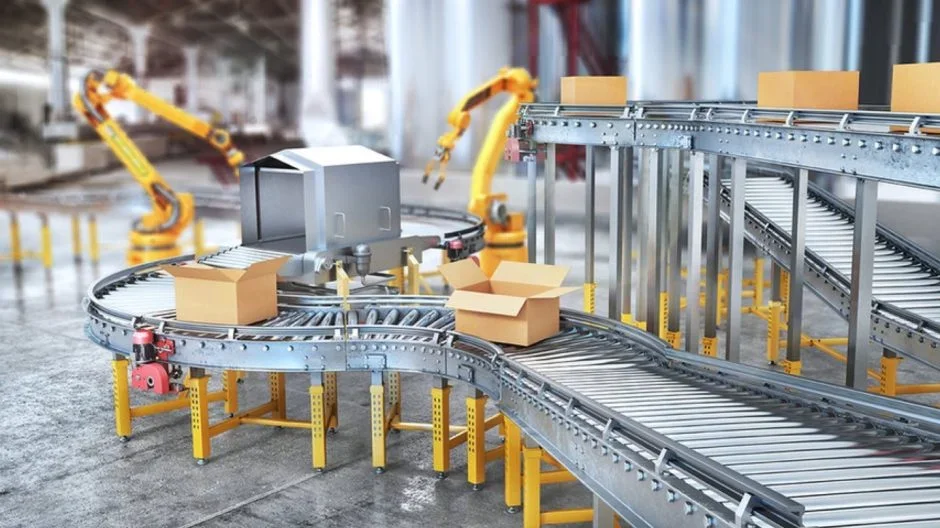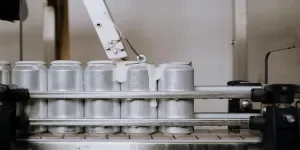Packaging automation’s evolution significantly impacts diverse sectors, including food and beverage, pharmaceuticals, and personal care. By Laura Syrett.

Automated packaging solutions have transformed the packaging industry, with manufacturers using increasingly sophisticated human-free technology to produce more innovative products more efficiently and at lower cost.
Indeed, the development of packaging automation, directing equipment, machinery or other solutions to perform parts of the packaging process without direct human control, is growing fast, said Pune, India-based Future Market Insights.
In an assessment, it valued the global packaging automation market at USD74.53 billion in 2023, while predicting it will grow at around 8% per year to reach USD161.66 billion by 2033.
The report noted that the food and beverage, pharmaceutical and personal care sectors are among those enthusiastically adopting more automation in packaging, and that growth in this area is being partly driven by rising demand for customised packaging.
Stephen Mills, director of London, UK-based TPG Packaging Consultants, said that advanced materials have been among the key enablers of this technological progress:
“Automation success starts with high performance materials which capture lightweighting, accelerate production speeds and maintain strength, from paper to plastics to biomaterials,” he told Packaging Gateway.
As an example of this, US-headquartered ecommerce giant Amazon announced in October (2023) that it had launched “first-of-its-kind” automated packing technology – initially at its UK and German fulfilment centres – that uses in-built sensors to cut specially developed paper packaging according to the size of the item to be delivered.
The paper used to package Amazon’s deliveries is light but durable, stretchy and more weather resistant than regular paper.
It can also be heat-sealed like plastic but is “easily” recyclable. Amazon said the paper was purposely created by Amazon’s material scientists for its automated machines to use.
According to the company, by packing items in 100% recyclable light paper packaging, which is made-to-fit without the need for padding, these automated packing machines help reduce the weight of packaging per shipment by around 26 grams, on average – reducing transport costs and waste.
Mills also cited the advent of robotics in packaging production lines as a significant step forward in streamlining the progress of packaging evolution.
Although robots have been in use in factories for decades, the arrival of smarter, more compact robotic solutions speed-up packaging systems, add flexibility and reduce mistakes caused by human error.
Meanwhile, automated ‘in line’ manufacturing has enabled production to move away from factory production lines, customising and localising packaging lines to customer premises.
According to Daniel Stewart, director of engineering at Seattle, US-based packaging automations business Summit Packaging, collaborative robots (or ‘cobots’) were the “number one trend in packaging automation” in 2023.
These industrial robots are designed to work safely alongside humans in a shared workspace. This distinguishes them from traditional industrial robots, “which operate behind safety barriers to prevent any human contact”, Stewart explained.
Because cobots are equipped with advanced sensors and software, which allow them to detect and respond to human presence, they reduce the reduce the risk of injury to humans while performing multiple tasks, such as packing products into boxes, palletising products, picking and placing products and assembling them.
In terms of packaging innovation, proponents of cobots, such as Västerås, Sweden-headquartered machine manufacturer ABB say these machines can extend the benefits of automation to heavy industry packaging applications.
Last June (2023), ABB launched two new variants of its popular GoFa cobot – the GoFa 10 and GoFa 12 – designed for industrial packaging applications, automating demanding tasks such as machine tending, welding, parts handling, polishing and assembly.
As well as production efficiencies, cost-savings and accuracy benefits, packaging companies are also looking to automation to solve quality and security issues.
According to Renaat Van Cauter, marketing director at Engilico, a Belgian company specialising in in-line sealing inspection and monitoring technology for packaging in the food, pet care and other industries, automated packaging processes only achieve their full potential if they also have automated inspection and detection systems:
“Automatic in-line detection of defective seals is important for both [product] safety and production automation in packaging,” Van Cauter told Packaging Gateway.
“Many customers that are automating their production processes need automated in-line inspection [as well] to eliminate manual labour [completely] and guarantee product quality at the best production speed,” he said.
Mills believes that 3D printing, which can be a fully automated function using data fed into software that then instructs printers to produce products to exact specifications, and which can allow for last minute ‘personalisation’ of packaging component, is likely to be one of the next big evolutionary steps for packaging automation.
Such systems could be enhanced by artificial intelligence (AI), whose potential for boosting packaging automation has been widely touted, particularly its ability to automate packaging design, spot defects in production lines, and helping to optimise production lines and improve recycling rates.
UK consumer goods conglomerate Unilever recently announced that, together with Chinese e-commerce giant Alibaba, it has created recycling machines that use artificial AI to automatically identify and sort waste plastic packaging for recycling in China, as well as optimise designs of some of its products sold in plastic bottles to make them more sustainable.
The company has also partnered with Denmark-based accessibility app specialist Be My Eyes, which creates AI-enabled mobile phone-based applications for visually impaired people, to trial ways of helping blind or low-sited customers to interact with its packaging – recognising products, reading ingredients and following preparation instructions.
Despite its many and varied benefits, Mills noted that some packaging companies perceive automation as a high-cost solution, particularly by small and medium-sized enterprises (SMEs) in the packaging sector – a trend noted in FMI’s research, which also highlights the lack of relevant expertise to support the roll-out of automated solutions in the packaging sector.
“However, automation now costs less, while machinery options and reliability are greater,” Mills said, highlighting the availability of competitively priced automation technologies from southeast Asian equipment manufacturers.
Source from Packaging Gateway
Disclaimer: The information set forth above is provided by packaging-gateway.com independently of Alibaba.com. Alibaba.com makes no representation and warranties as to the quality and reliability of the seller and products.



